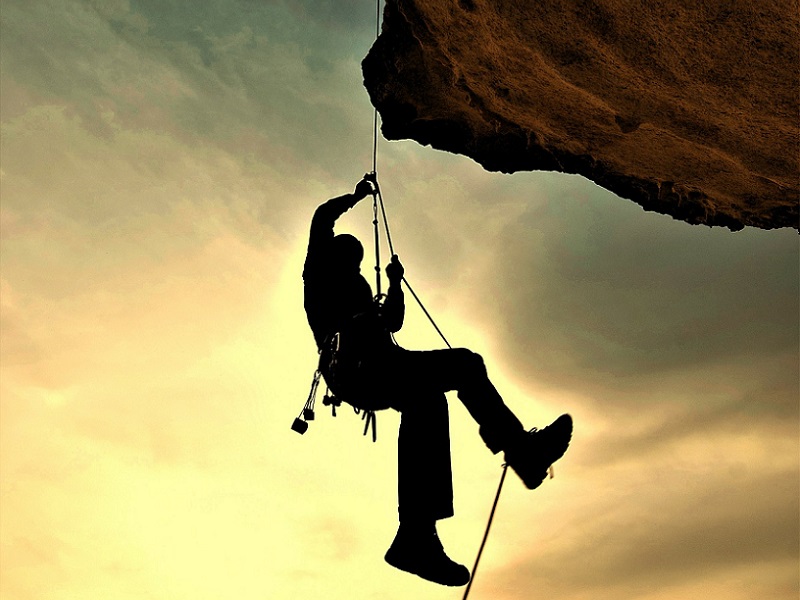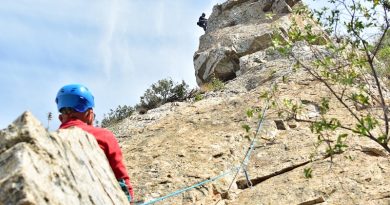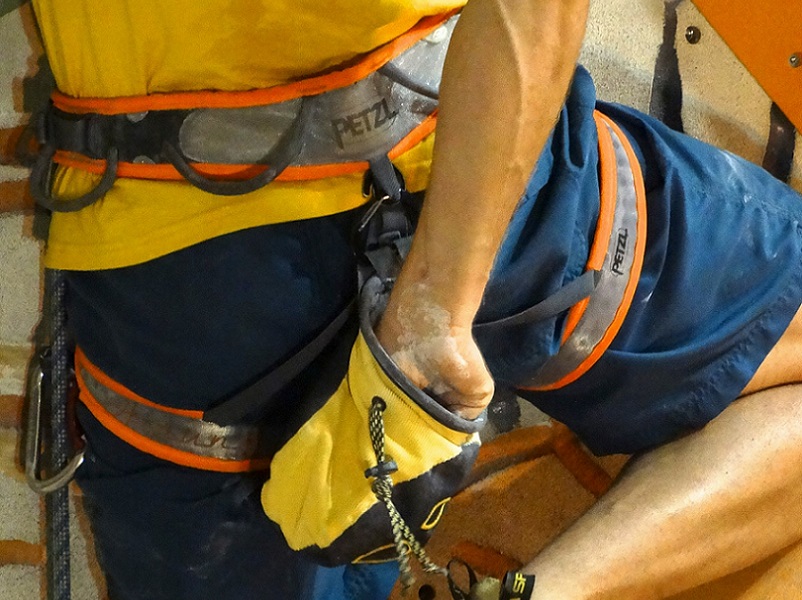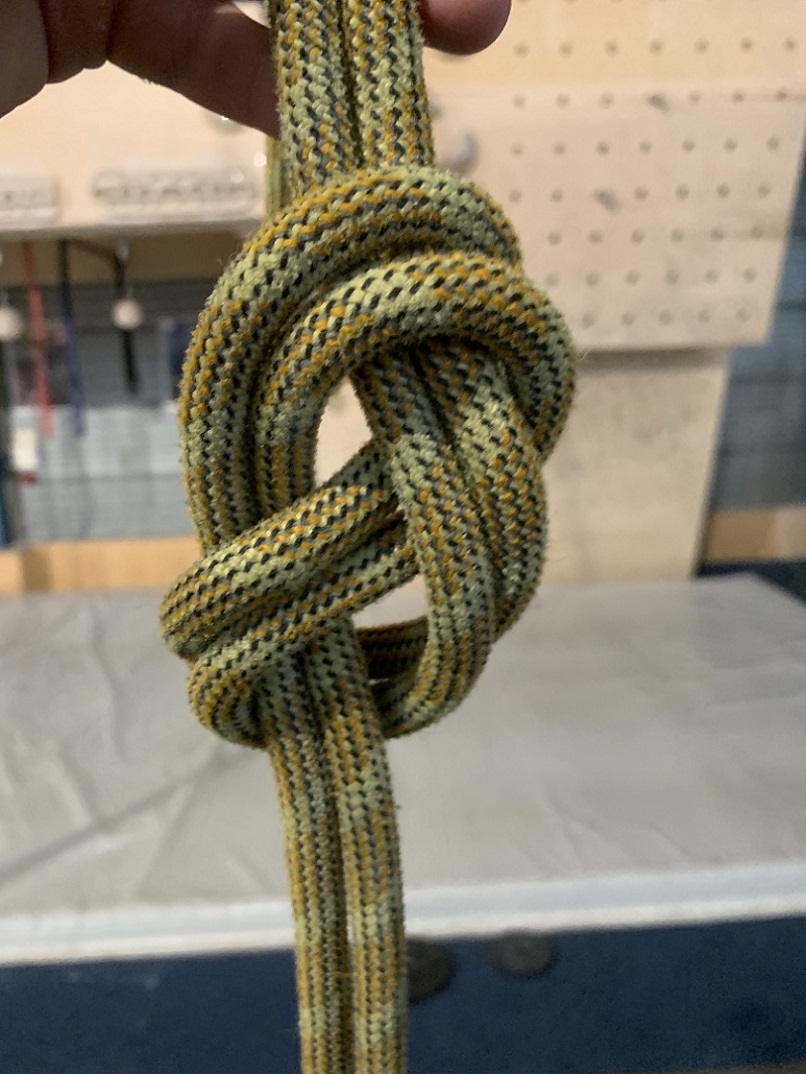Three things are certain in life: death, taxes, and the thrill of rock climbing. If you’ve ever climbed, you know that nothing beats the thrill of scaling an imposing rock wall. But have you ever stopped and thought about what makes it all possible?
In this guide, I’ll examine exactly what it is that your climbing rope is made of. You may be surprised to learn that your rope consists of different parts—with different compositions. In general, it’s important to understand the different parts of your rope and their unique structures.
Let’s take a look at these parts one by one so that you can gain a better understanding of your rope.

Rope Parts
To begin with, let’s take a look at how climbing ropes are constructed. For this piece, we’ll discuss dynamic ropes, as these are the ropes climbers use for lead climbing purposes.
What are the two different parts to a dynamic rope? First, you have the core. The core constitutes your rope’s strong foundation. It serves as the backbone of your rope and gives it the strength and elasticity you need to climb.
Second, your rope has a sheath. The sheath serves as the colorful, outer layer of your rope. Furthermore, it functions as a protective layer, guarding the core of your rope from damage.
Understanding the different parts to your rope can help you keep better rope maintenance, so let’s take a look at what these two rope parts are made up of.
Core Construction
What is the core of your rope made up of?
Specifically, most dynamics ropes contain between ten to fifteen nylon strands that are woven together to form a durable elastic rope foundation. Generally speaking, the core of your rope will be white, though you likely won’t see too much of this core unless your rope is damaged (in which case, it’s time to upgrade your rope).
So the core of your rope consists of around fifteen nylon strands. Pretty simple, right?
Not exactly. As it turns out, a lot goes into the making of this woven nylon. First, one nylon string consists of thousands of nylon fibers being twisted together. Rope makers braid three of these strings together. The result of this braid is just one of the fifteen nylon strands that are used in the construction of your rope’s core.
What does this mean?
Simply put, it means that your rope is pretty durable. Though it may not appear to be much on the surface, the core of your rope consists of thousands upon thousands of nylon fibers that give it the strength to keep you climbing for years.
Sheath Construction
You may be wondering, “Is my rope’s sheath made the same way?”
The answer is “No.” As it turns out, your rope’s sheath consists of a much simpler composition. Specifically, because the sheath of your rope functions as an elastic, protective layer for your rope’s core, it requires a different composition.
To begin with, dynamic rope sheaths are typically woven around the core of your rope. Rope makers weave nylon strings around the core of your rope to build the sheath. In general, these nylon strings are much flatter than the ones found in the core of your rope because they aren’t twisted together.
These flatter nylon strands allow your rope to have greater elasticity. In fact, according to some measures, they can enable your rope to stretch up to forty percent.
Why Nylon?
Now that you know the general composition of your climbing rope, let’s tackle an important question: why nylon?
Specifically, there are several advantages in using nylon to manufacture climbing ropes. For starters, nylon resists friction and wear and tear much better than other rope-making materials. It also allows for greater elasticity and resiliency while climbing.
How resilient is nylon, exactly? To put it mildly, nylon fibers can retain their efficiency for up to ten years if left dormant. This means that you could feasibly use a climbing rope up to ten years old if it’s left packaged.
That’s pretty impressive for a material that’s naturally thinner than human hair.
For these reasons, nylon is the predominant material in dynamic climbing ropes. It’s helpful to envision nylon as a stretchy, plastic-like substance (even if that’s not how your rope feels).
As you might expect, climbing ropes are machine-made and heavily tested before being packaged and shipped. Remember to check your rope’s packaging upon purchase to see just how long your rope’s lifespan is. Often, you can check this information as well as specific composition details when you purchase your rope.
Climbing Rope Weight
Knowing this, how heavy is a climbing rope?
If you’ve never climbed before, you may be wondering just how heavy those woven nylon fibers are. After all, we’re talking thousands of fibers—and that’s got to be a lot of weight, right?
Actually, wrong. Despite the fact that your rope consists of countless fibers, strands, and strings, most climbing ropes average less than ten pounds (about 4,5kg). This means that you can comfortably carry them across your crag and enjoy your climbing trip.
The Bottom Line
In closing, your climbing rope may be more than meets the eye.
What may appear simple on the outside actually results from an intricate process that links together thousands of tiny nylon fibers into an efficient product that can suspend hundreds of pounds.
To recap, your dynamic climbing rope consists of two different parts: the core and the sheath. While both of these parts are formed from woven nylon strands, the process for making each differs significantly.
In the manufacturing process, these two parts come together to form a product that is durable and can keep you climbing for years.
So don’t worry! Whether you are new to rock climbing or are an experienced climber, you can be sure of one thing: your climbing rope is truly something special.
That means it’s time to go on your next climbing adventure! So go out, and put that nylon to the test!






